In life there are pivotal moments that set an alternative trajectory, welcoming change, new experiences and opportunities. For Cambridge-based garden designer Rob Chew, one such moment occurred five years ago while visiting potential clients in Ascot. “There was an instant trust and understanding,” recalls Rob, “no strict brief as such, just requests for a lawn, long garden vistas and lots of colour throughout the year.”
The trust and friendship grew steadily over time, as did the size of garden, which had previously been divided by several large hedges. Spaces, including a tennis court, were cleared, along with a span of leylandii screening that reached more than 20 metres into the sky. Brambles were removed and old stands of rhododendron reduced, revealing a mature boundary planting of English oak (Quercus robur) and beech (Fagus sylvatica), along with coniferous species such as incense cedar (Calocedrus decurrens), Scots pine (Pinus sylvestris) and western hemlock (Tsuga heterophylla). This mixed woodland perimeter would prove to be essential to the garden, setting the tone as it gently held the site separating it from nearby properties.
Planting in the organically curved beds incorporates ornamental grasses, artfully blended with associated perennials
More transformations were afoot as the existing house was rebuilt to appease the owners’ changing lifestyle. The result was a large, open expanse of approximately five-and-a-half acres surrounding the new house. Of course, the site was not without challenges as the lower half of the garden, where the sandy soil meets a band of London clay, would sit wet in winter. To alleviate this, 1,000 metric tonnes of Fawley top soil was mixed with the 650 tonnes of excess soil already on site. The garden was levelled, allowing for a substantial lawn, gently sloping topography and a sweeping drive. Flower borders were included, being more formal and geometric around the house and terrace, and becoming soft and curved further away. Discussions between Rob and the clients continued, resulting in the creation of a kitchen garden to one side
of the house and to the other, a quiet, reflective space to practise yoga. Discover more about the garden below.
In brief
What A private garden enclosed by mature mixed woodland. Where Berkshire. Size Five-and-a-half acres. Soil A mix of sandy loam and London clay with an acidic pH. Climate Temperate. Hardiness zone USDA 8.
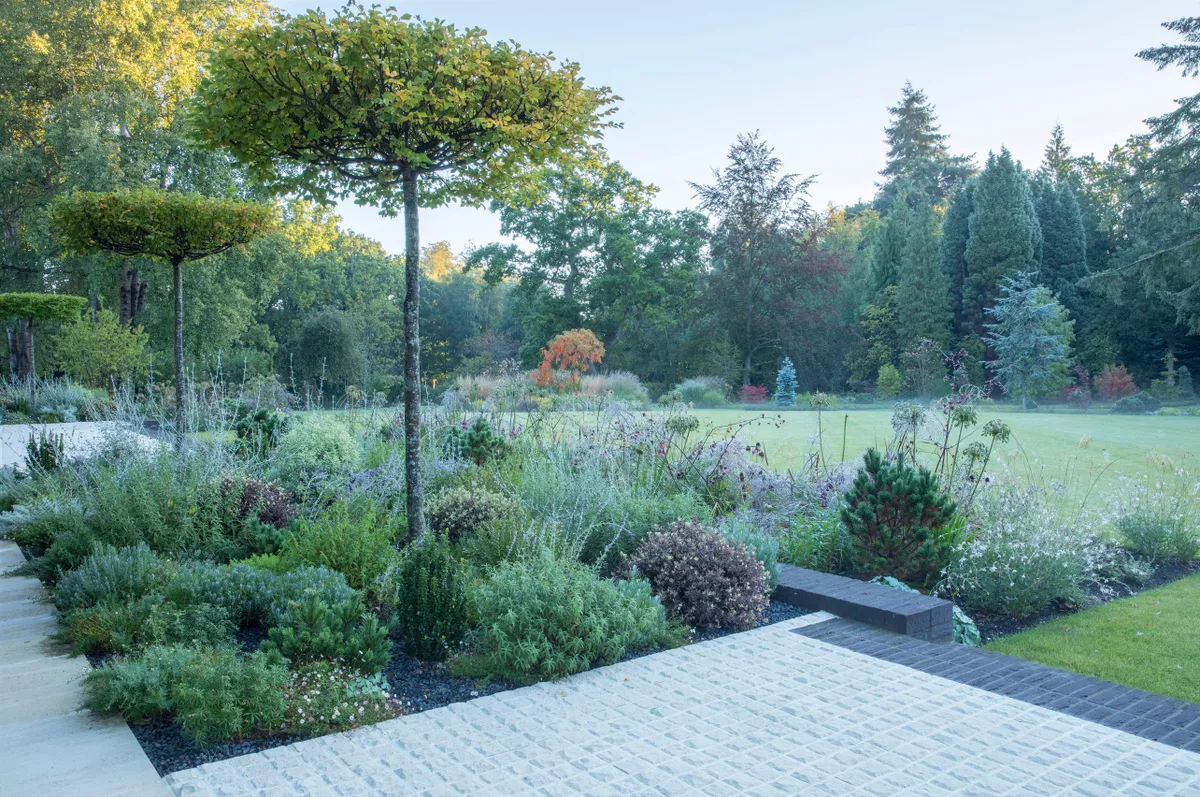
An informal mix of sub-shrubs and woody perennials create soft texture around the terrace and frame the view as autumnal colours appear. Lavender, rosemary and sage sit alongside other heat-tolerant species, such as Cistus and Santolina chamaecyparissus, thriving in the sunny aspect and radiating the heat of the terrace.
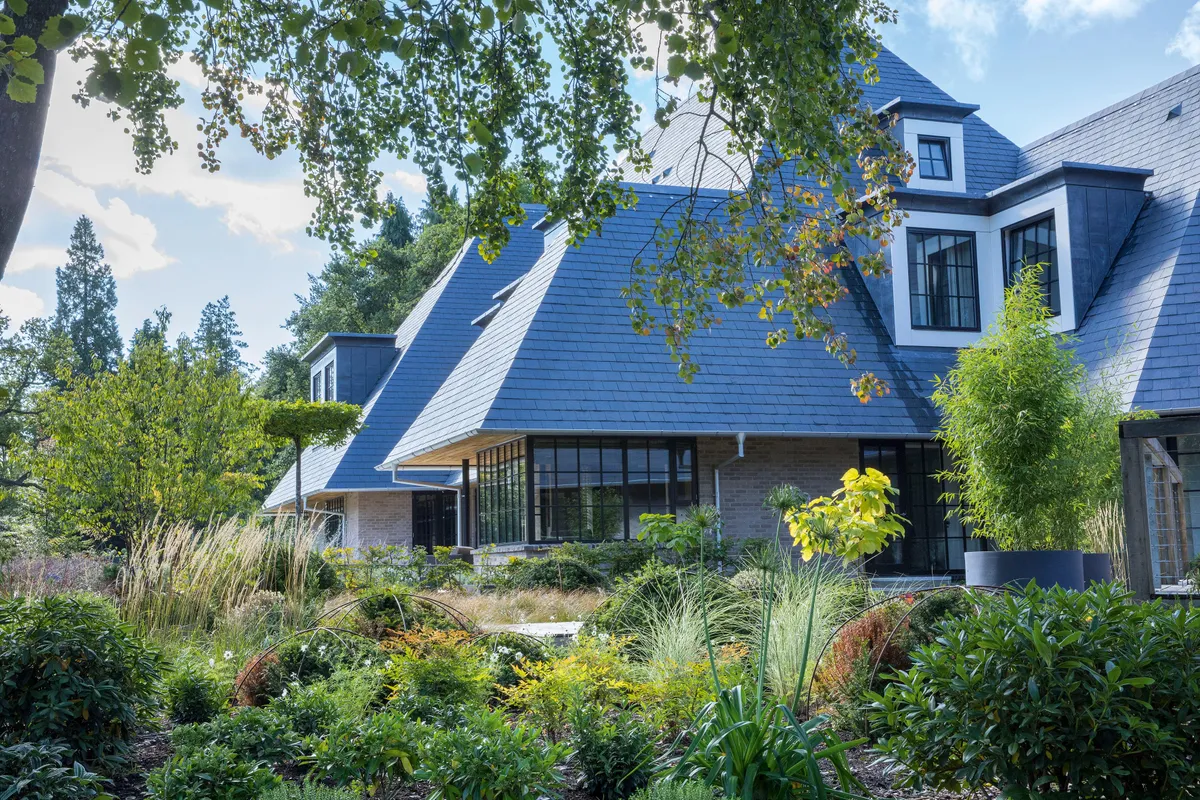
Above The house sits central to the garden, balanced by the mature trees and substantial lawn that surround it. Large windows take in wide views of the garden, while table-top hornbeam and containerised Phyllostachys aurea grow close, emphasising the strong connection between house and garden.
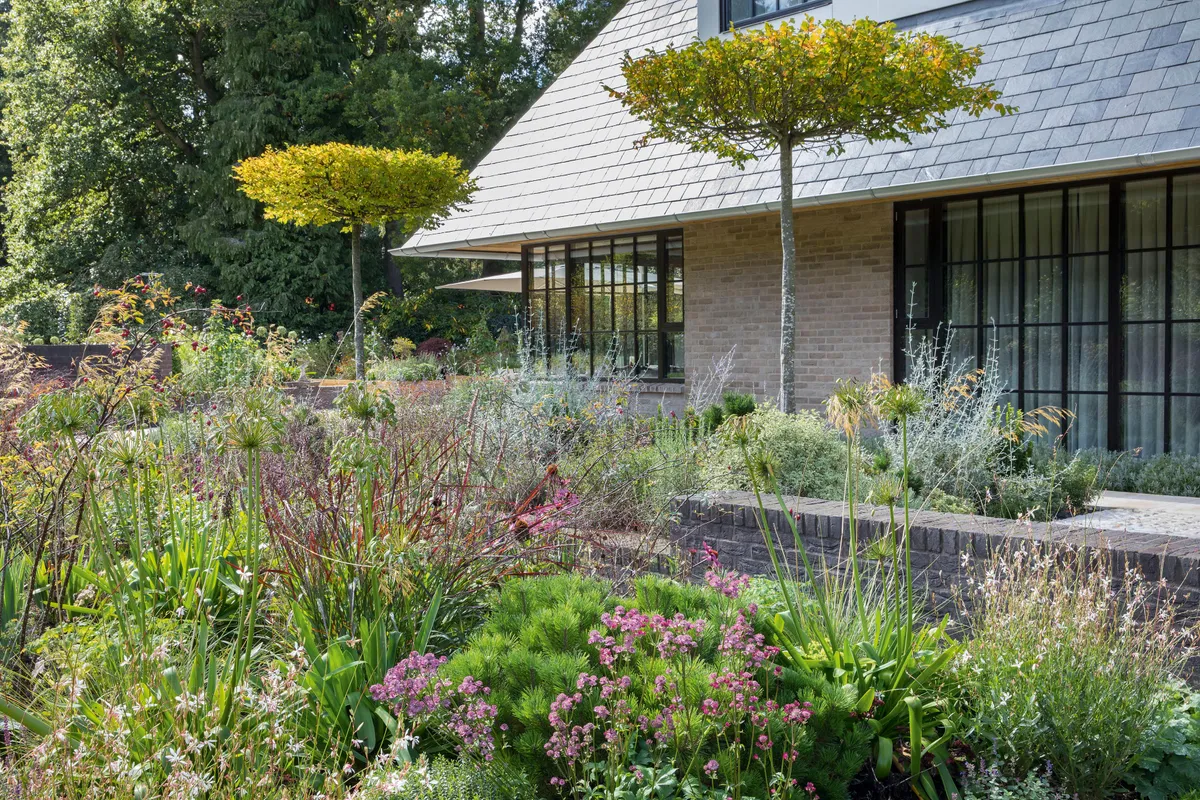
Mixed planting softens the edges of the terrace, containing Agapanthus ‘Ovatus’, Nepeta x faassenii and Salvia nemorosa ‘Caradonna’ among other perennials. Panicum virgatum and Stipa gigantea add movement, while Rosa glauca and Pinus mugo add structure.
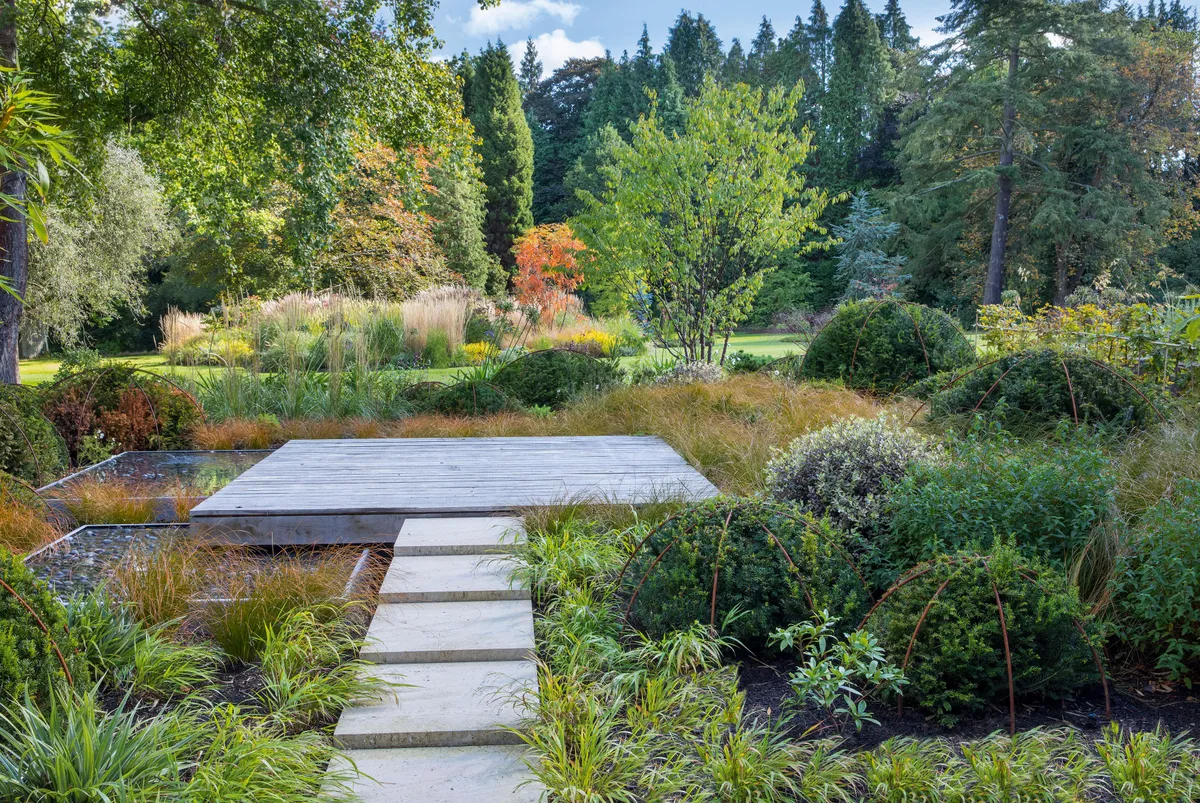
Facing page below Reflective pools and a raised deck provide a quieter spot in the garden. Loose plantings of Carex testacea and Hakonechloa macra cushion the topiarised yew. A multi-stemmed Prunus serrula and plantings of Calamagrostis x acutiflora ‘Karl Foerster’ maintain privacy while offering selected views.
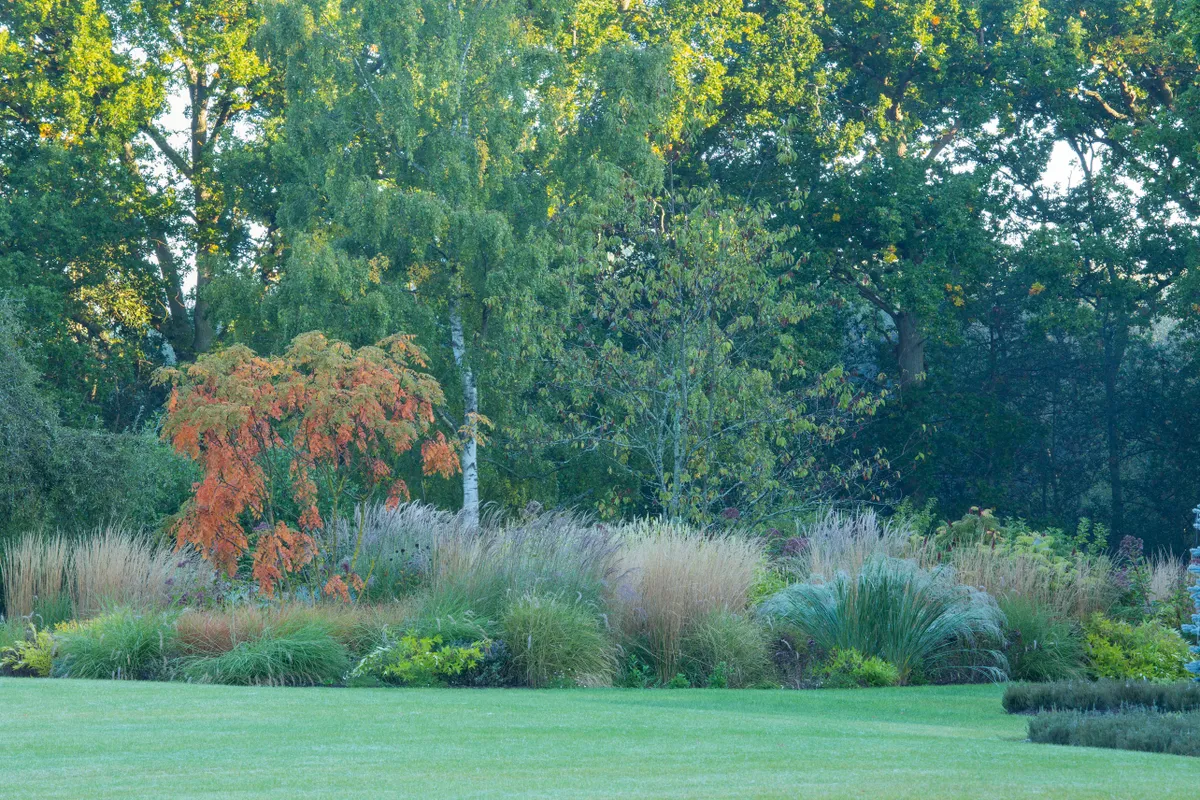
As autumn approaches, the fiery foliage and coppery seedpods of Koelreuteria paniculata take centre stage among the seedheads of Anemanthele lessoniana, Miscanthus sinensis ‘Kleine Silberspinne’ and Panicum virgatum ‘Shenandoah’.
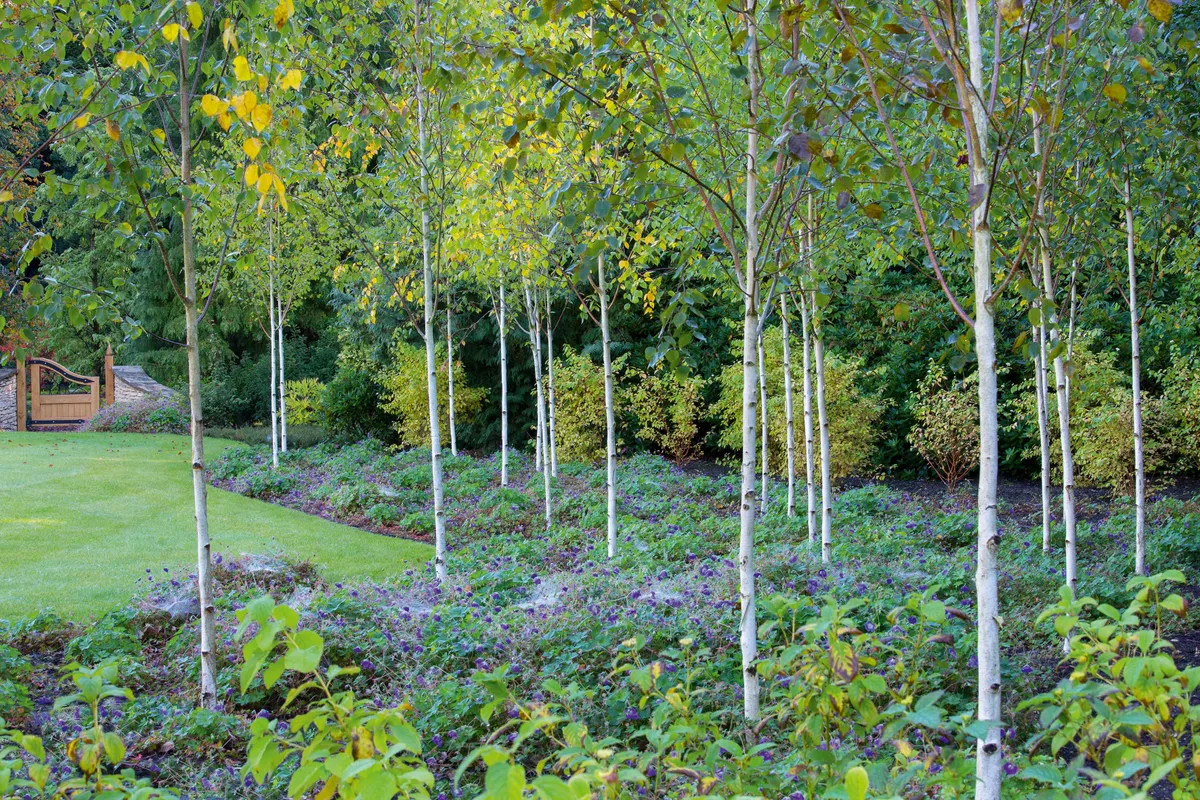
A grove of white-stemmed Betula utilis stand in front of dark rhododendron foliage. As summer fades, the energising blue of Geranium Rozanne (= ‘Gerwat’) complements the autumnal leaves of both the birch and Cornus sanguinea ‘Midwinter Fire’.
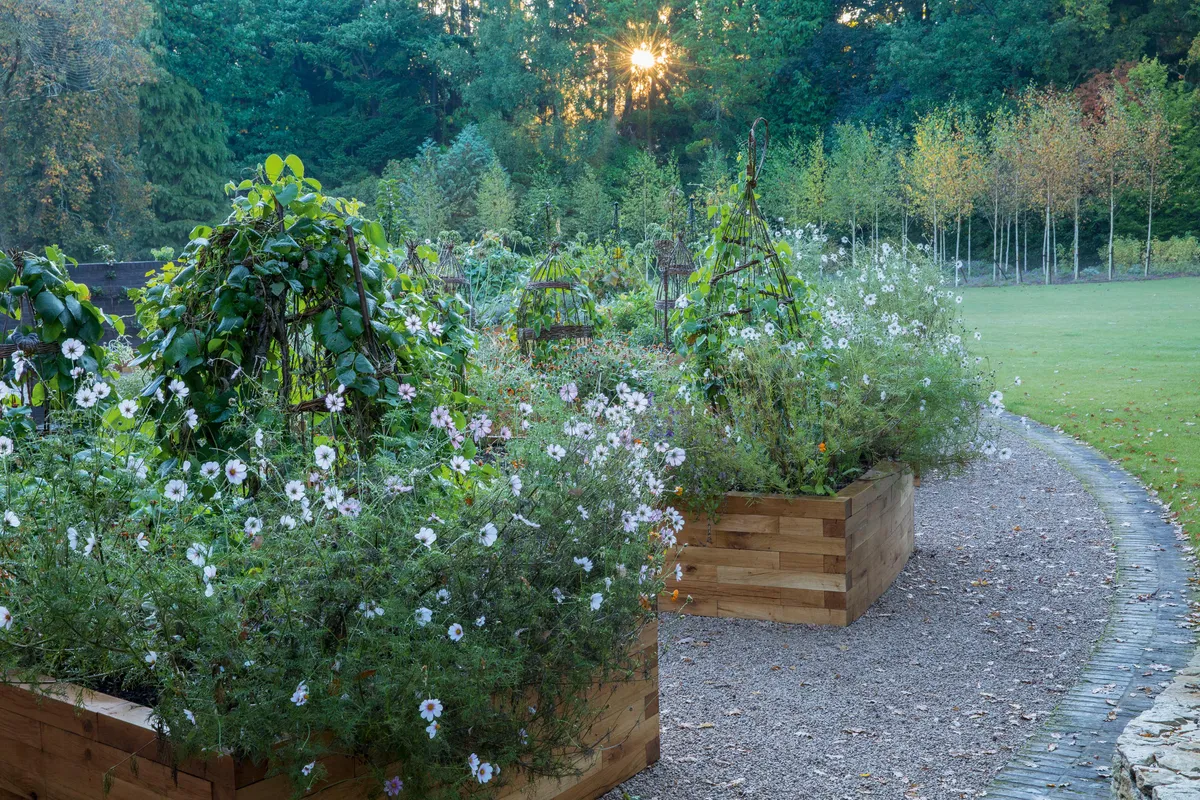
Curving around one side of the terrace, the kitchen garden comprises large, raised, oak planters. By high summer, white cosmos and tagetes spill from the planters, which are also home to vegetables and herbs. Woven obelisks add height and provide support for Lathyrus odoratus cultivars and climbing beans.
Find out more about Rob’s work at abbotswoodgardendesign.co.uk

